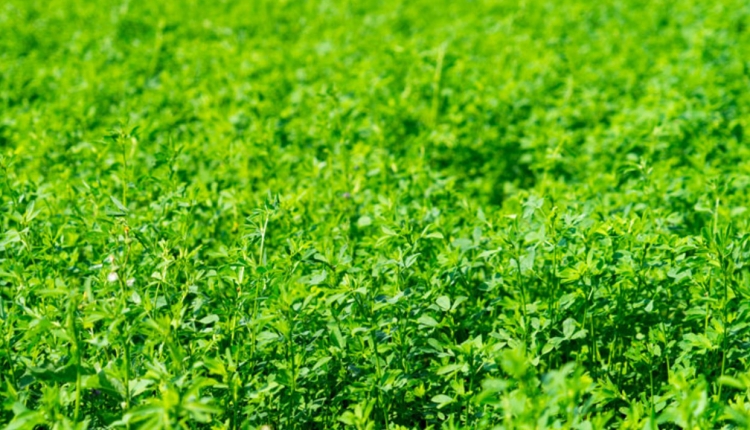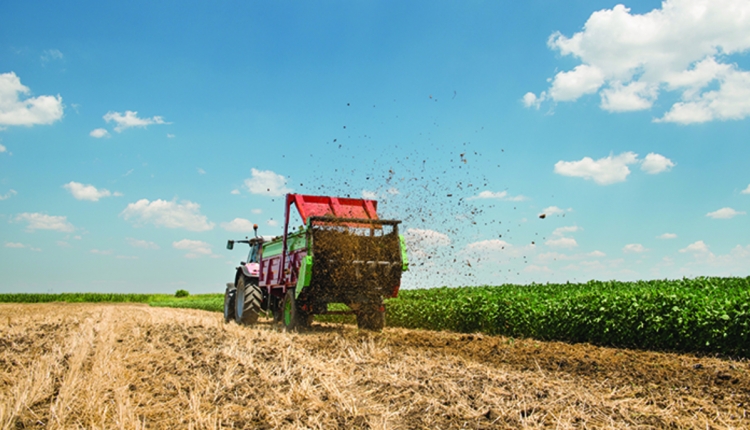The author is the Northeast director for International Plant Nutrition Institute (IPNI).
Phosphorus is an essential nutrient for growing crops. But in the wrong place - in excess concentration in streams, rivers, and lakes - it can lead to algal blooms. To grow crops without harming water, the right source of fertilizer P must be applied at the right rate, right time, and right place. It's called 4R Nutrient Stewardship.
Source. Plants need P dissolved in water. If we had a source that would dissolve only in the water taken up by the plant, but not in the water leaving the field, it would be the solution. But we don't. We do need sources that can be conveniently placed in the soil.
Rate. Fertilizing to recommendations based on soil and plant analysis is important.
Time. It's important to apply when the risk of runoff is low. Research shows that when P fertilizer is left on the soil surface, any rainfall-induced runoff within the next several weeks will contain much-elevated levels of soluble P. While such runoff wouldn't carry away more than a small percentage of the P applied, it doesn't take much P loss to start an algal bloom.
The "right place" likely holds the greatest opportunity for improvement. The right place includes:
Where the soil doesn't have enough. Soil testing identifies where crops need it most.
In zones of need within fields. This calls for mapping variability in soil properties and soil test levels.
Close to the roots of the plants that need it. Phosphorus isn't very mobile in the soil. Many crops, especially corn, have a special need for P early in the growing season. With or near the seed is a good place for P. Applying it in bands below the soil surface reduces the risk of it moving to water by surface runoff.
In a cropping system geared to higher yields. Phosphorus enrichment gives a seedling greater potential which can only be attained when everything else is managed to avoid limitations. High yields remove more P from the soil, and the removal must be replaced to maintain soil fertility.
Into a soil that can take in and hold as much water as possible. Tillage and crop residue management, over the long term, influence soil structure in a site-specific manner. No single tillage system fits all situations, but the soil conservation strategy needs to aim for high water infiltration, high water storage, and minimal stratification of soil P levels.
There are wrong places to put P, too. To minimize impacts on water quality, you need to avoid putting soluble forms of P on the surface of runoff-susceptible soils, especially during the critical periods . . . late fall and early spring in most areas.
Click here to return to the Crops & Forages E-Sources
110825_533
Phosphorus is an essential nutrient for growing crops. But in the wrong place - in excess concentration in streams, rivers, and lakes - it can lead to algal blooms. To grow crops without harming water, the right source of fertilizer P must be applied at the right rate, right time, and right place. It's called 4R Nutrient Stewardship.
Source. Plants need P dissolved in water. If we had a source that would dissolve only in the water taken up by the plant, but not in the water leaving the field, it would be the solution. But we don't. We do need sources that can be conveniently placed in the soil.
Rate. Fertilizing to recommendations based on soil and plant analysis is important.
Time. It's important to apply when the risk of runoff is low. Research shows that when P fertilizer is left on the soil surface, any rainfall-induced runoff within the next several weeks will contain much-elevated levels of soluble P. While such runoff wouldn't carry away more than a small percentage of the P applied, it doesn't take much P loss to start an algal bloom.
Place holds the greatest potential
The "right place" likely holds the greatest opportunity for improvement. The right place includes:
Where the soil doesn't have enough. Soil testing identifies where crops need it most.
In zones of need within fields. This calls for mapping variability in soil properties and soil test levels.
Close to the roots of the plants that need it. Phosphorus isn't very mobile in the soil. Many crops, especially corn, have a special need for P early in the growing season. With or near the seed is a good place for P. Applying it in bands below the soil surface reduces the risk of it moving to water by surface runoff.
In a cropping system geared to higher yields. Phosphorus enrichment gives a seedling greater potential which can only be attained when everything else is managed to avoid limitations. High yields remove more P from the soil, and the removal must be replaced to maintain soil fertility.
Into a soil that can take in and hold as much water as possible. Tillage and crop residue management, over the long term, influence soil structure in a site-specific manner. No single tillage system fits all situations, but the soil conservation strategy needs to aim for high water infiltration, high water storage, and minimal stratification of soil P levels.
There are wrong places to put P, too. To minimize impacts on water quality, you need to avoid putting soluble forms of P on the surface of runoff-susceptible soils, especially during the critical periods . . . late fall and early spring in most areas.
110825_533











